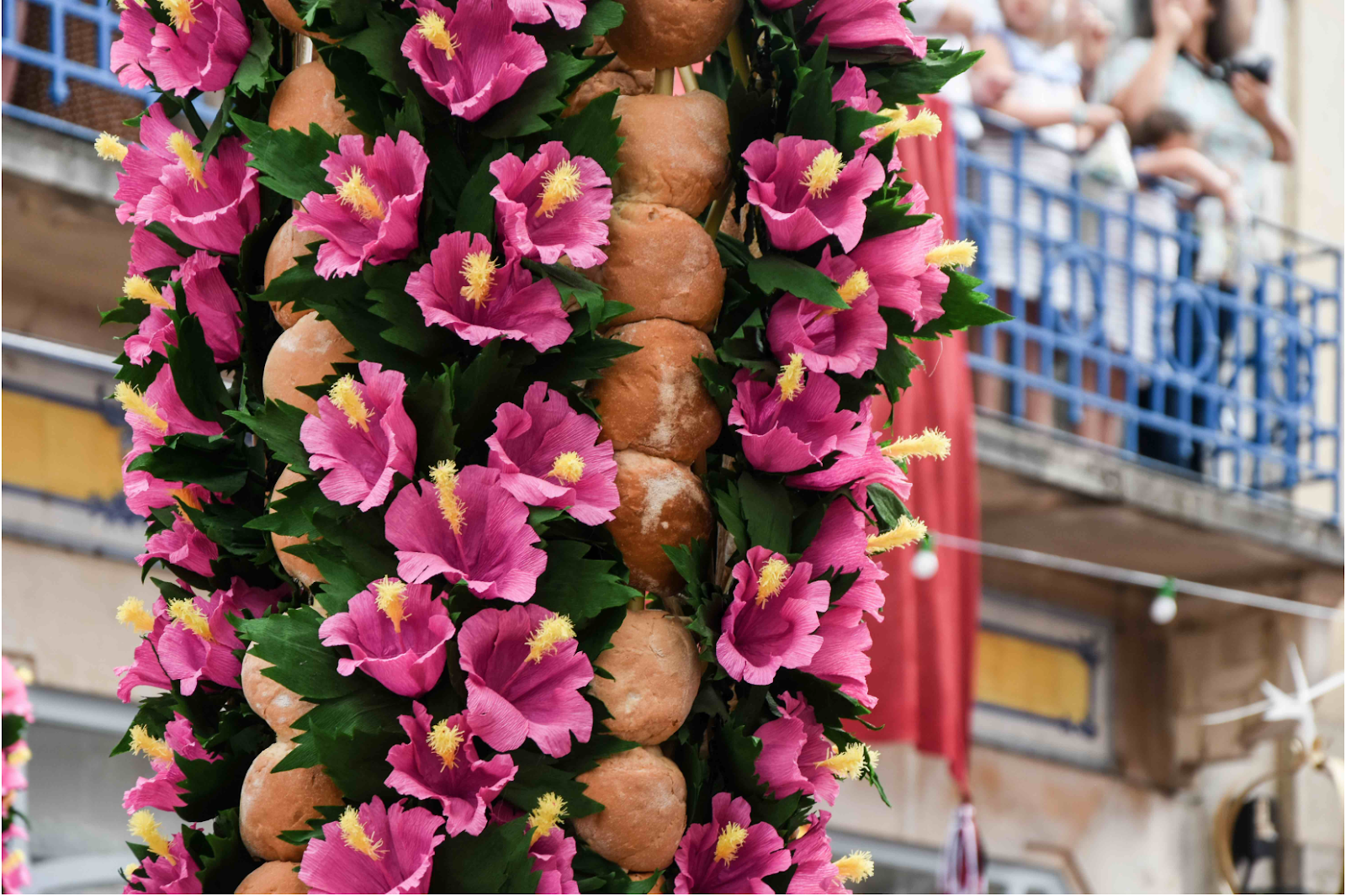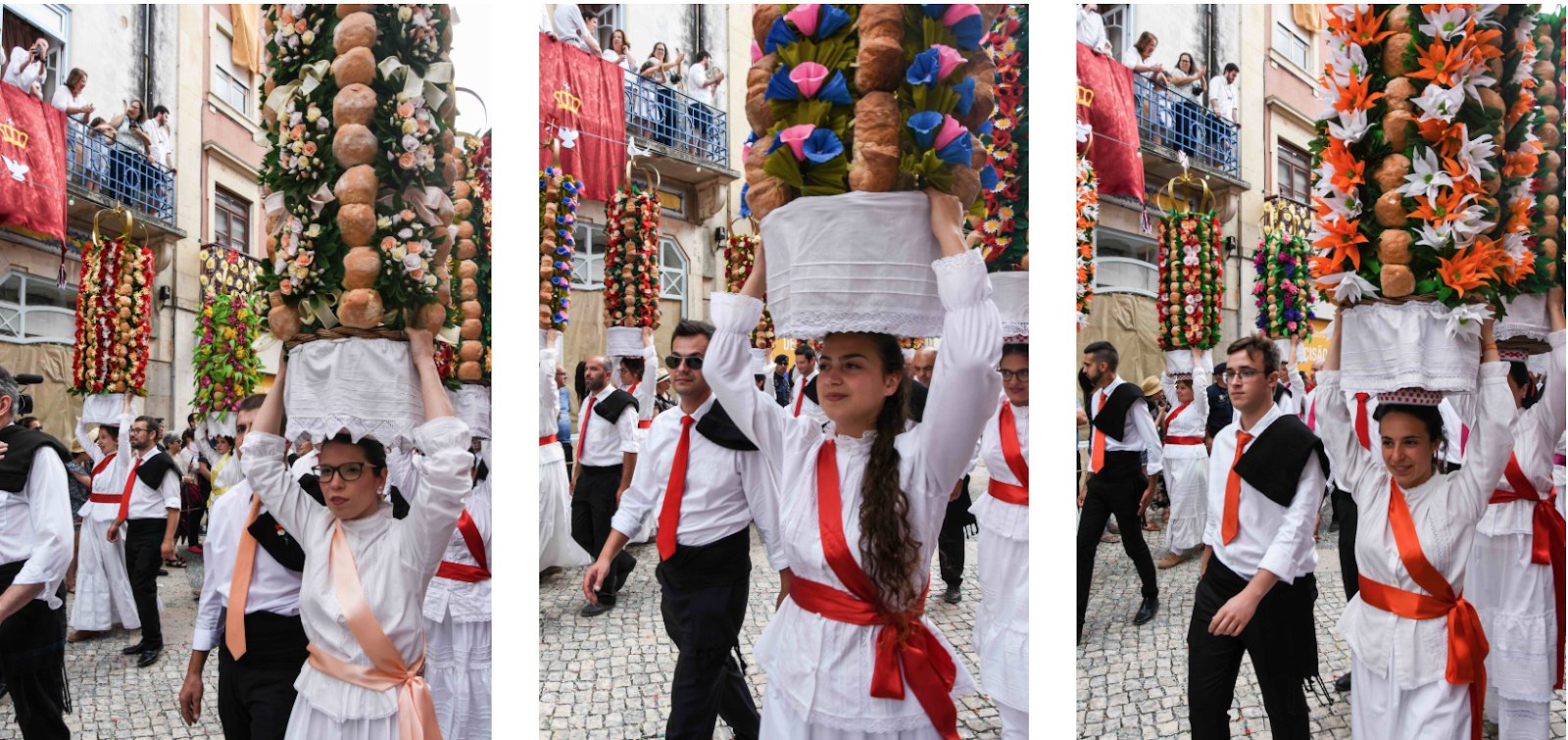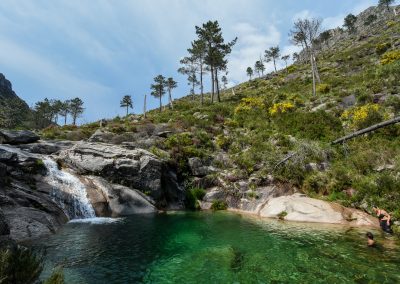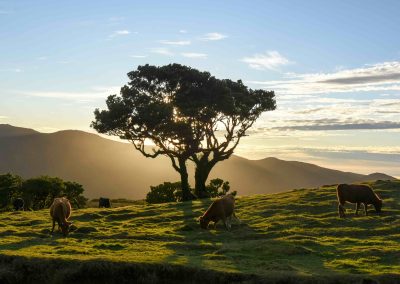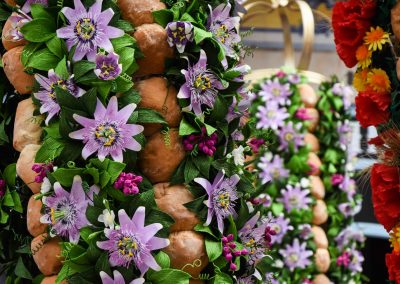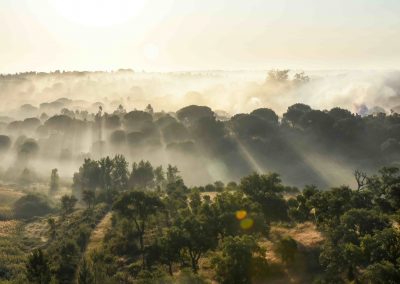This year there was the Festa dos Tabuleiros, in Tomar, celebrated every four years and one of the most typical and oldest festivals in Portugal, which dates back historically to the reign of D. Dínis in the framework of the cult of Espirito Santo, but is believed to have pagan origins, even older, offerings to the goddess Ceres around Midsummer, symbolism of the fertility of the earth and hence the pursuit of women’s fertility.
The highest point of the Festival, which takes place for several weeks between June and July, is the Parade of the Tablelands (Cortejo dos Tabuleiros), which this year was celebrated on July 7, the day that we and 600,000 other people came to the city of Tomar. We chose to go by train from Lisbon, because we imagined it would be a chaos to take the car. It was the best option. As soon as we arrived we headed to the Seven Hills National Forest (Mata Nacional dos Sete Montes), where the day before had been deposited all 748 Tabuleiros that were going to parade. Unfortunately it was already closed, preparing for the parade – a friend told me that the best day of the party is the day before this big Parade because there are not so many people on the streets and we see the partial procession of the arrival of the Tabuleiros to this forest and then you can calmly see all the trays inside the Mata. The idea then was to look for a place to have a picnic, since the forest was not an option.
The whole city is decorated for the Festa, all downtown streets adorned with and paper flower rugs and “pergolas” each one prettier than the next, the hanging matts at the windows and balconies filling the city with color. For those who were hungry and wanted to find the picnic site quickly had no luck, because we wanted to photograph everything!
.
Waiting then in the front row for the Tray Blessing to end, I also learned that the bell rings three times and at the third ring boys and girls raise the Tabuleiros all at once, which I could see from afar. Opening the procession comes one of the four philharmonic bands, pass the water bearers, pass the politis from each Parish Council, carrying the banners and crowns and even the President of the Republic, Professor Marcelo Rebelo de Sousa, always with his friendly smile and cheered by the crowd. The Tabuleiros begin, in between another musical moment, more Tabuleiros and at the end we have two bulls, formerly pulling carts carrying children – now on foot – and wine barrels, and at the end the Scouts symbolizing the Bread (the Trays), the Wine (in the ox carts) and the Meat (the scouts).
It was a very interesting and beautiful experience, but with too many people! I think if I want to go back in four years, I’ll take my friend’s advice and go to Tomar on Saturday instead of Sunday
If you liked this post and want to read more about my trips to Portugal, you can visit the following posts:












